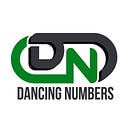How to Set Up Multiple Companies in QuickBooks Desktop
QuickBooks Desktop stands out as a reliable accounting software solution for businesses of all sizes. Its versatility allows users to manage finances efficiently, including the capability to handle multiple companies within a single platform. This article will guide you through the process of setting up and managing multiple companies in QuickBooks Desktop, ensuring smooth operations for your business endeavors.
Introduction to QuickBooks Desktop
QuickBooks Desktop is a robust accounting software developed by Intuit, designed to streamline financial management tasks for businesses. It offers a range of features, including invoicing, expense tracking, and reporting, making it a popular choice among entrepreneurs and accounting professionals.
Importance of QuickBooks Desktop for Managing Multiple Companies
For businesses operating multiple entities or divisions, QuickBooks Desktop provides a centralized platform to consolidate financial data, streamline processes, and gain insights into each company’s performance. By efficiently managing multiple companies in QuickBooks Desktop, businesses can enhance productivity and make informed decisions.
Understanding Multiple Companies in QuickBooks Desktop
In QuickBooks Desktop, a company file represents a separate entity’s financial data. Managing multiple companies involves creating and maintaining distinct company files for each business entity, allowing users to track finances separately while accessing all files within the same software environment.
Benefits of Managing Multiple Companies in QuickBooks Desktop
The ability to manage multiple companies in QuickBooks Desktop offers several advantages:
- Streamlined financial management: Each company file can have its own chart of accounts, transactions, and reports, enabling efficient tracking and analysis.
- Centralized platform: Users can access and switch between company files seamlessly, eliminating the need for separate accounting software for each entity.
- Cost-effective solution: QuickBooks Desktop’s pricing structure allows users to add multiple company files without significant additional costs, making it an economical choice for businesses with diverse operations.
Setting Up Multiple Companies
Setting up multiple companies in QuickBooks Desktop involves the following steps:
Step 1: Accessing QuickBooks Desktop
Launch QuickBooks Desktop and ensure you have administrative privileges to create new company files.
Step 2: Creating a New Company File
Navigate to the “File” menu and select “New Company” to initiate the setup process for a new company file.
Step 3: Entering Company Information
Follow the prompts to enter essential company information, such as name, address, industry type, and fiscal year start date.
Step 4: Customizing Preferences for Each Company
Tailor the settings and preferences for each company file according to its specific requirements, including currency, tax settings, and reporting preferences.
Managing Multiple Companies Efficiently
To ensure efficient management of multiple companies in QuickBooks Desktop, consider the following strategies:
Organizing Company Files
Maintain a systematic approach to organizing company files, such as naming conventions and folder structures, to facilitate easy access and management.
Setting Up Users and Permissions
Assign appropriate user roles and permissions for each company file to control access to sensitive financial data and ensure security.
Utilizing Features for Intercompany Transactions
Explore QuickBooks Desktop’s features for handling intercompany transactions, such as transfers between entities, to streamline financial transactions and reconciliation processes.
Troubleshooting Common Issues
Despite its user-friendly interface, users may encounter occasional challenges when setting up and managing multiple companies in QuickBooks Desktop. Common issues include:
Error Messages During Company Setup
Address error messages promptly by referring to QuickBooks Desktop’s help resources or seeking assistance from support channels.
Compatibility Issues with Multiple Company Files
Ensure compatibility between QuickBooks Desktop versions and company files to prevent data corruption or loss.
Data Synchronization Challenges
Implement procedures for synchronizing data between multiple company files to maintain accuracy and consistency across entities.
Tips for Smooth Operation
To optimize the operation of multiple companies in QuickBooks Desktop, consider the following tips:
Regular Backups of Company Files
Schedule regular backups of company files to safeguard against data loss due to hardware failure, system crashes, or other unforeseen circumstances.
Keeping Software Updated
Stay updated with the latest versions of QuickBooks Desktop to access new features, bug fixes, and security patches for enhanced performance and reliability.
Utilizing QuickBooks Support Resources
Take advantage of QuickBooks support resources, including online guides, tutorials, and community forums, to troubleshoot issues and maximize productivity.
Conclusion
In conclusion, setting up and managing multiple companies in QuickBooks Desktop offers businesses a convenient and cost-effective solution for comprehensive financial management. By following the outlined steps and best practices, users can streamline operations, improve efficiency, and gain valuable insights into each company’s performance.
FAQs
1. Can I use the same QuickBooks Desktop license for multiple companies?
Yes, QuickBooks Desktop allows users to create and manage multiple company files within the same software license, making it a cost-effective solution for businesses with diverse operations.
2. Is there a limit to the number of companies I can set up in QuickBooks Desktop?
No, QuickBooks Desktop does not impose a limit on the number of company files users can create, allowing for scalability to accommodate growing businesses or additional entities.
3. Can I transfer data between different company files in QuickBooks Desktop?
Yes, QuickBooks Desktop provides features for transferring data between company files, including transactions, customer lists, and vendor information, facilitating seamless operations across entities.
4. How often should I back up my QuickBooks Desktop company files?
It is recommended to schedule regular backups of QuickBooks Desktop company files, preferably daily or weekly, to minimize the risk of data loss and ensure business continuity.
5. Where can I find additional support or resources for QuickBooks Desktop?
QuickBooks Desktop offers comprehensive support resources, including online guides, video tutorials, and community forums, accessible through the Intuit website or within the software interface.
